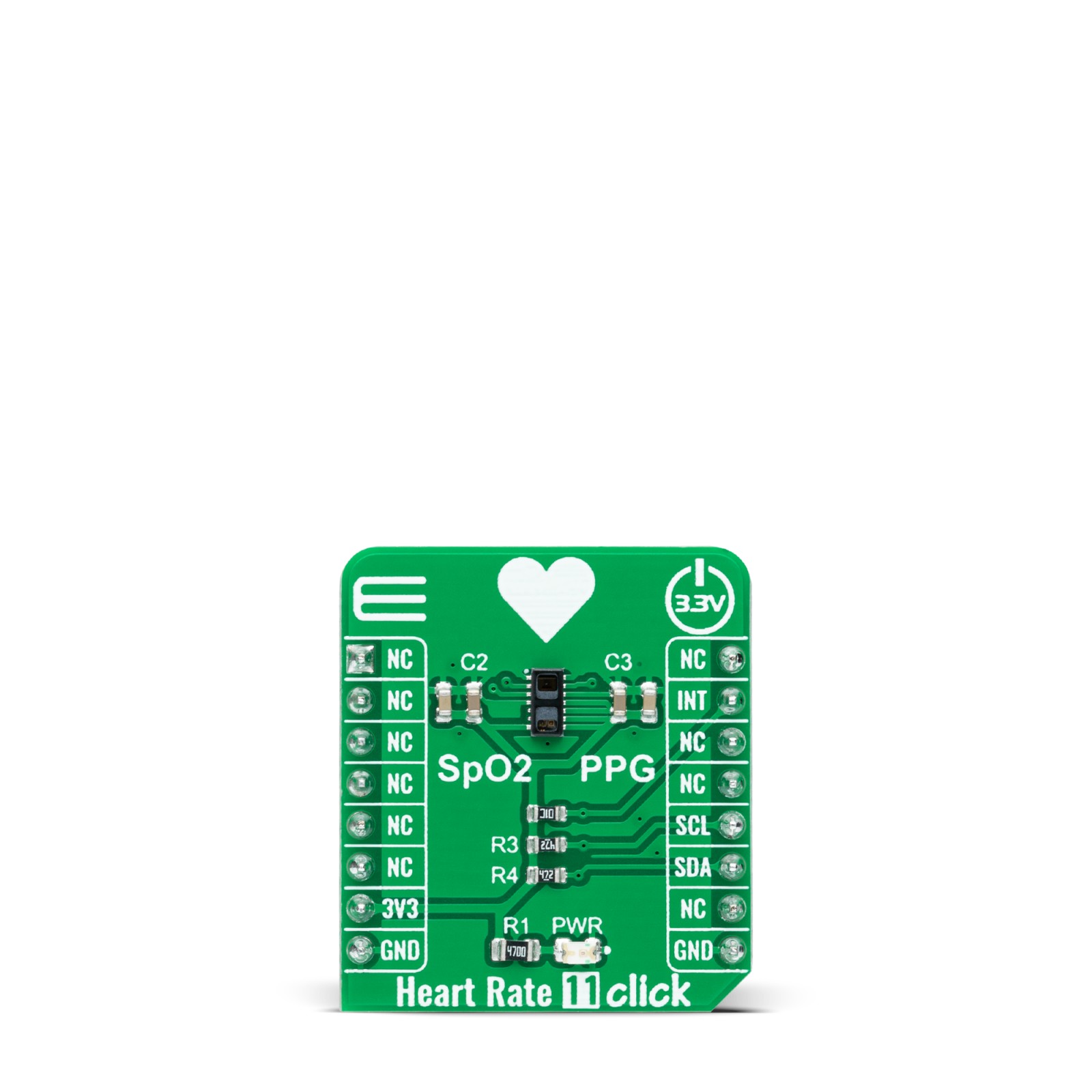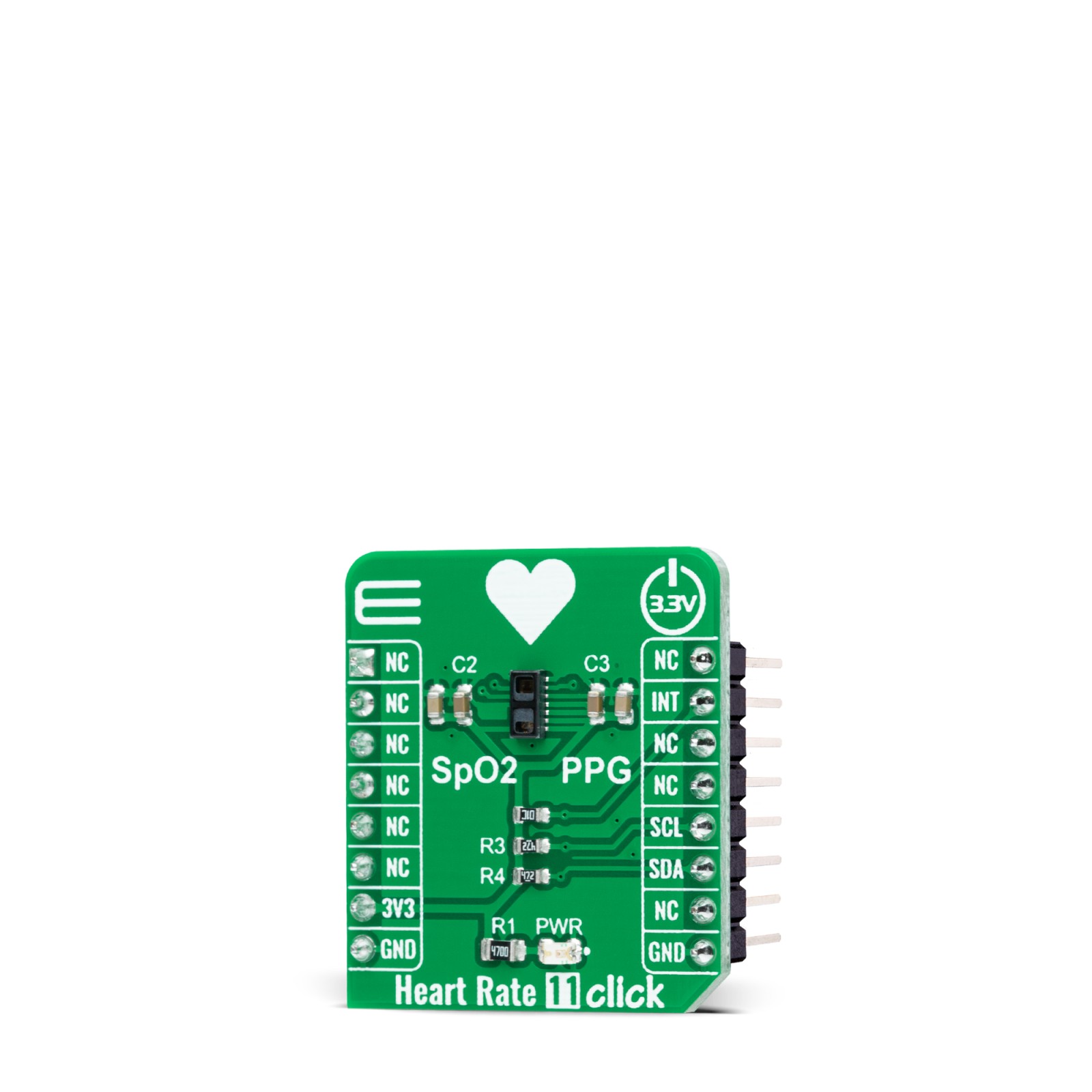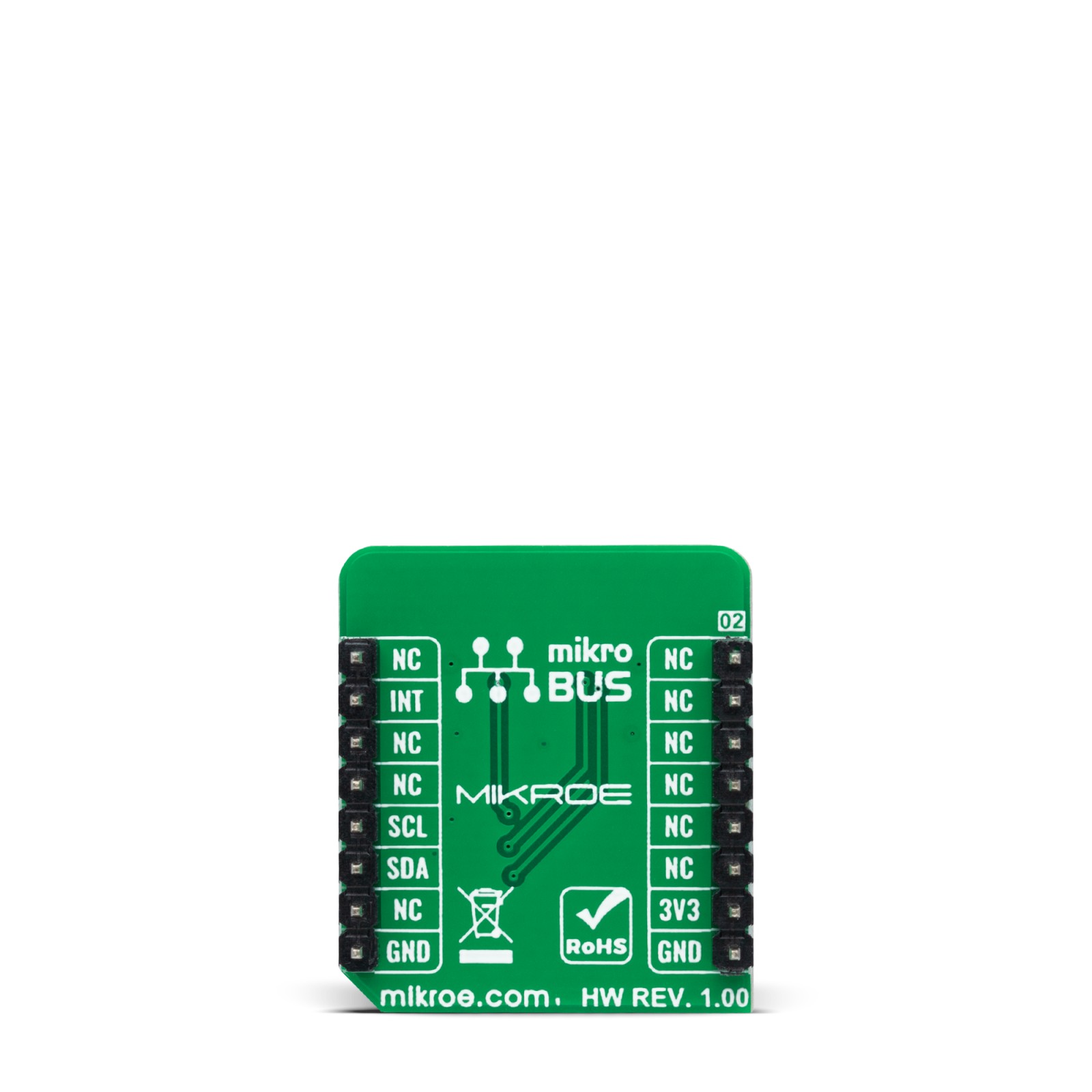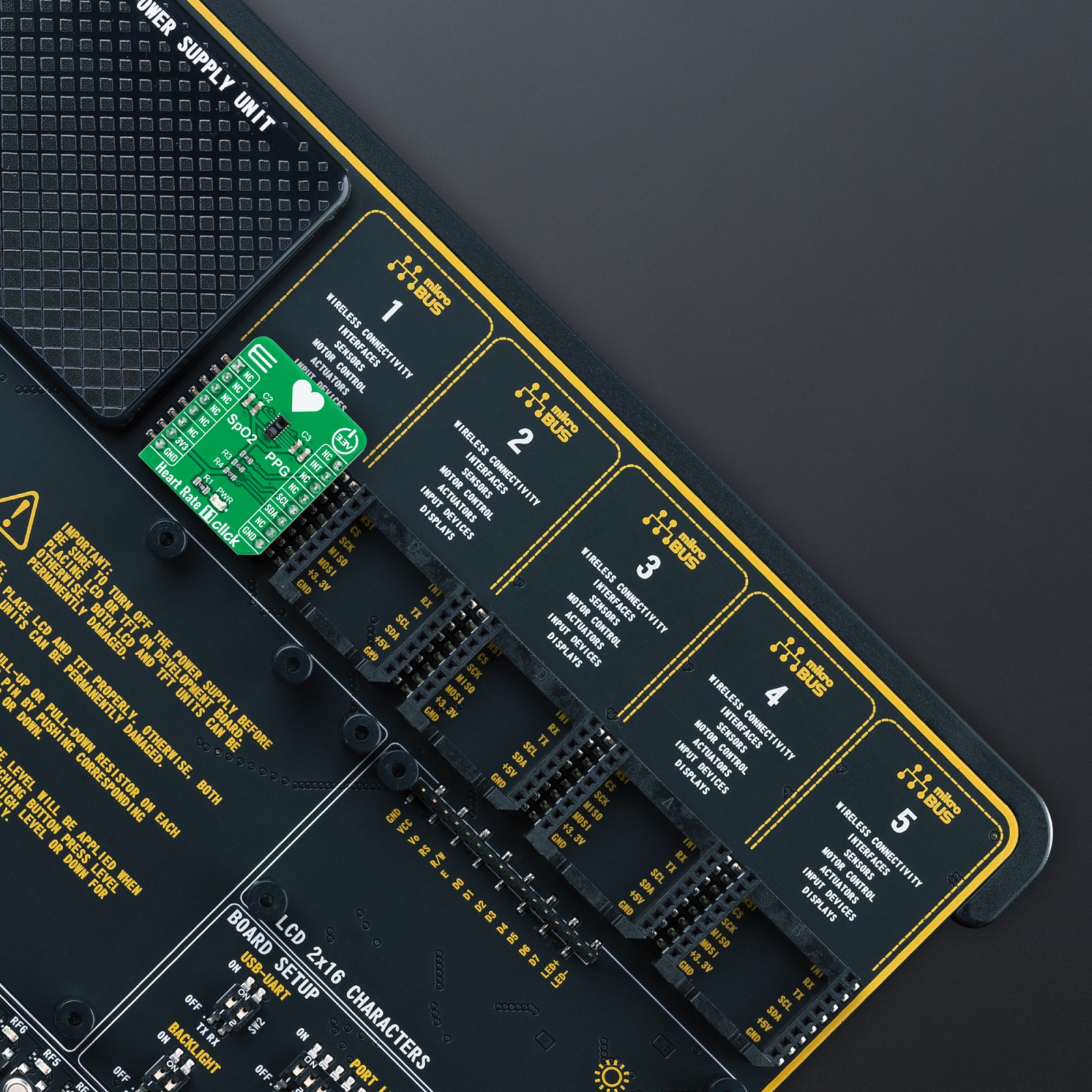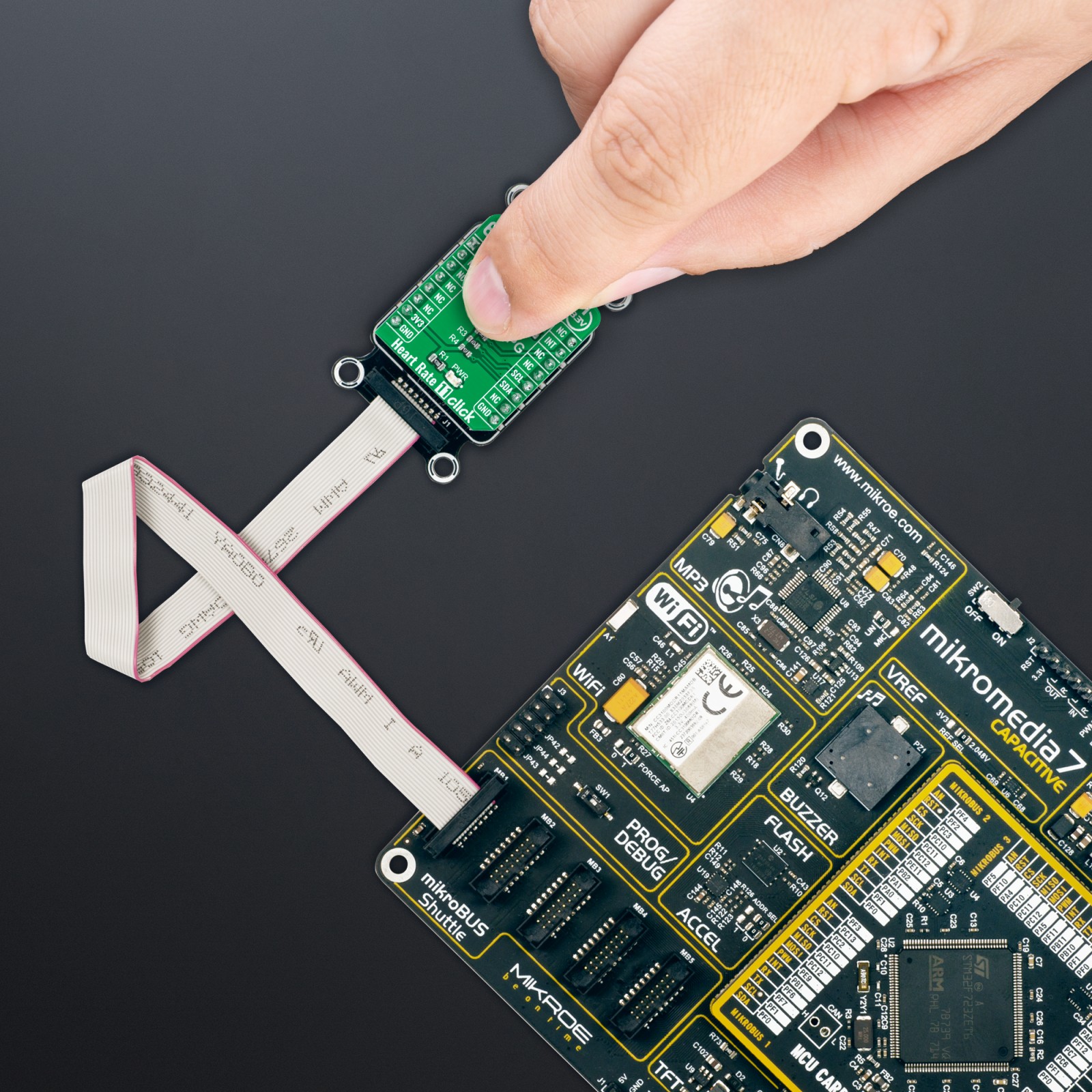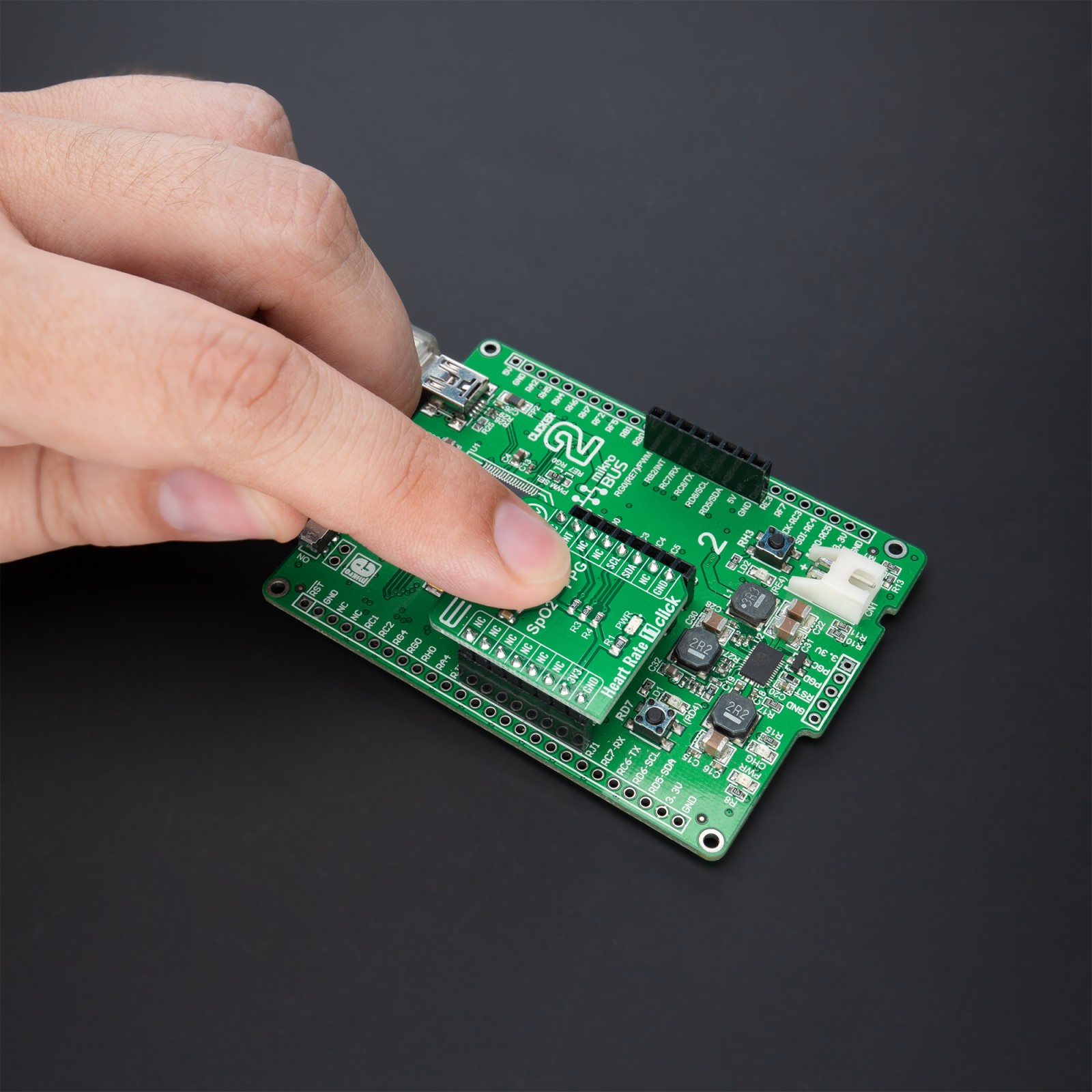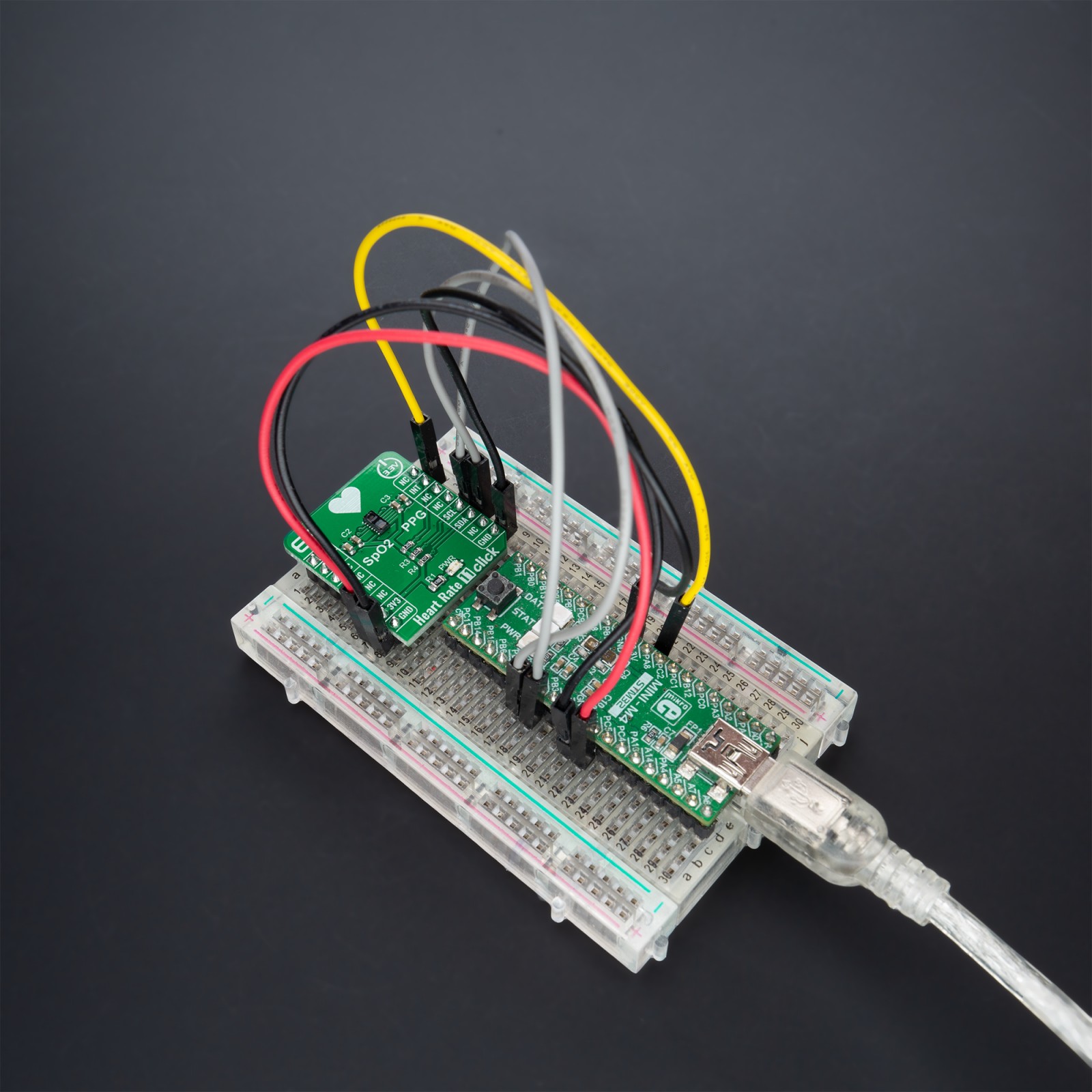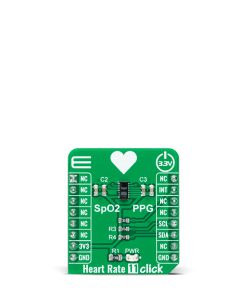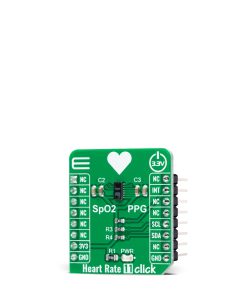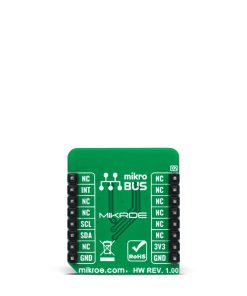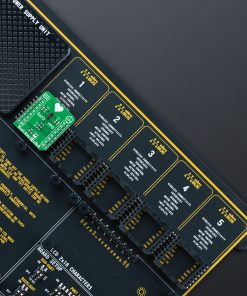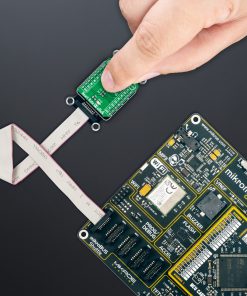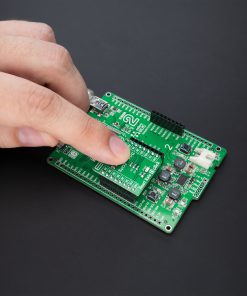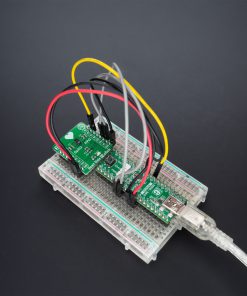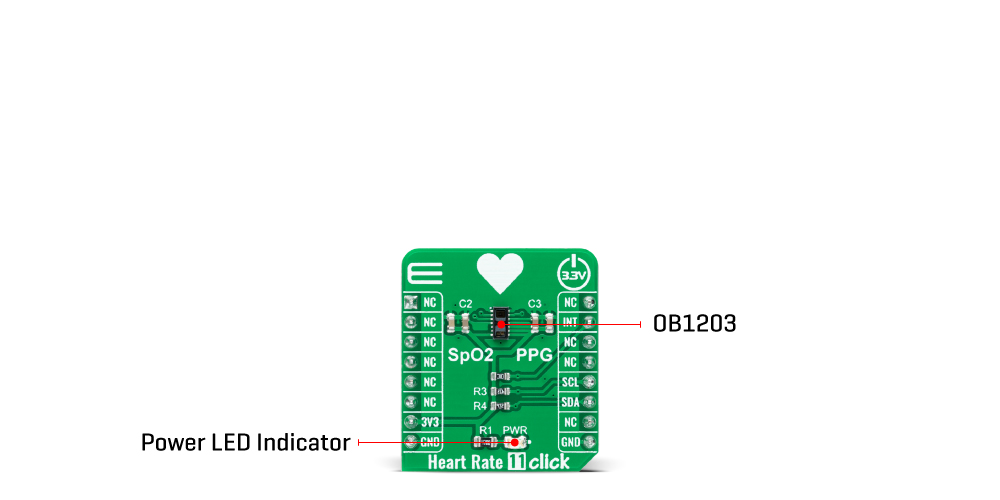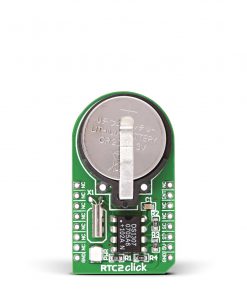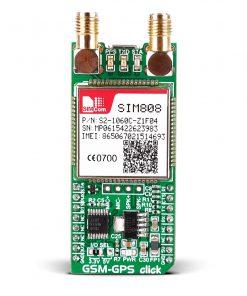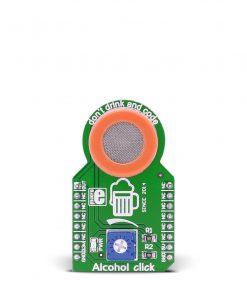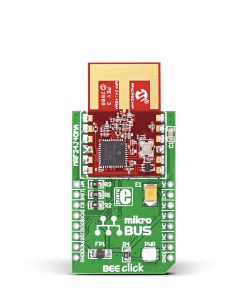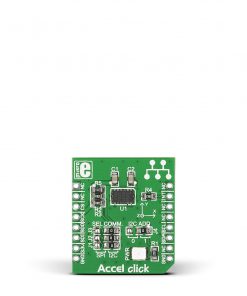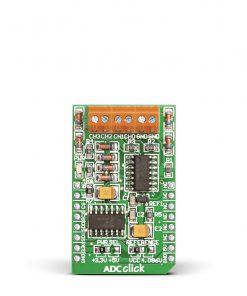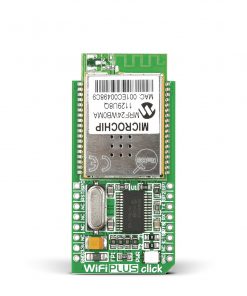Heart Rate 11 Click
R260.00 ex. VAT
Heart Rate 11 Click is a compact add-on board suitable for heart rate monitoring applications. This board features the OB1203, a multi-channel light sensor (LS/CS), a proximity sensor (PS), and a photoplethysmography sensor (PPG) from Renesas. It can be configured as an ambient light sensor to measure ambient light similar to the human eye experience or as an RGB color sensor. The OB1203 establishes communication to and from the module entirely through a standard I2C compatible interface and has a fully integrated biosensor for reflective photoplethysmography. With the appropriate algorithm, this Click board™ can determine human heart rate (HR), oxygen saturation (SpO2), respiration rate, and heart rate variability (a measure of stress).
Heart Rate 11 Click is supported by a mikroSDK compliant library, which includes functions that simplify software development. This Click board™ comes as a fully tested product, ready to be used on a system equipped with the mikroBUS™ socket.
Stock: Lead-time applicable.
| 5+ | R247.00 |
| 10+ | R234.00 |
| 15+ | R221.00 |
| 20+ | R212.68 |

